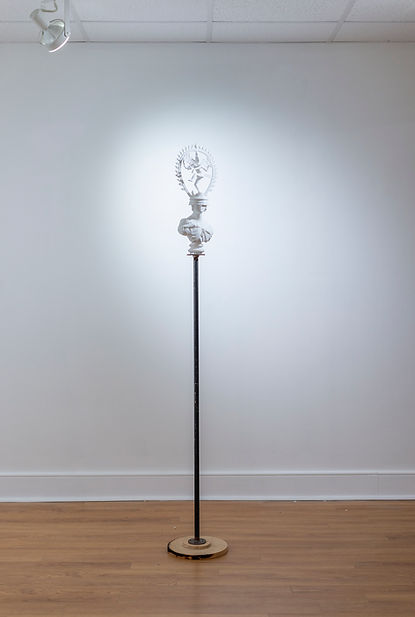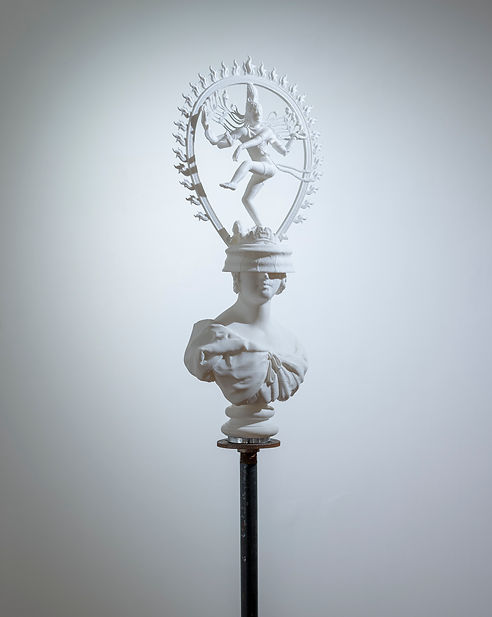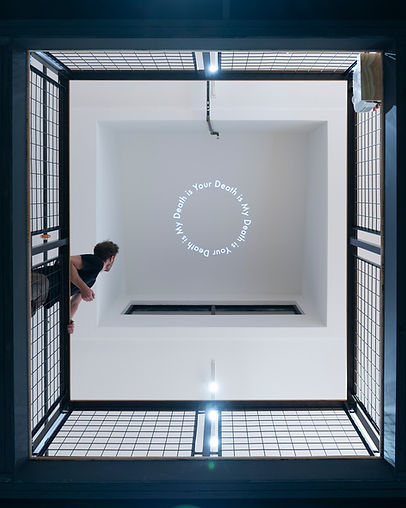DEEPFAKE DERRIDA
Deepfake Derrida: A Study in Young Derrida Speaking 'I Love You'
2022
Video file, microcomputer, silicone
~5"(W) x 5"(H) x 12"(D)
Deepfake of Jacques Derrida trained on interviews and lectures, 'Derrida on Love and Being', 'Derrida on Deconstruction', and 'Derrida on Archive Fever in South Africa (August 1998)' sourced from YouTube. Deepfakes use AI and Machine Learning, specifically Deep Learning techniques to imagine what a young Derrida may have looked like and spoken 'I love you' based on the source interview footage and stock video footage of a young model in the likeness of Derrida.
DECOLONIAL REFIGURATIONS
Please wait for 3D models to load
Please wait for 3D models to load
Please wait for 3D models to load
Child Saint, 2022
3D Model
=
Child Saint Sambandar
Located: Freer Gallery of Art, Washington, DC
Origin:
Chola, Bronze (?)
Provenance: ?
+
Sir Henry Montgomery Lawrence
Located: National Portrait Gallery, London
Origin: By Thomas Campbell, marble bust, 1849
Provenance: Donated by subject's grandson Sir Alexander Lawrence
=
The Empress of India,
3D printed PLA
~8”(W) x 18”(H) x 4”(D),
2020 (first print)
Siva Nataraja
Located: Guimet Museum, Paris
Origin: Tamil Nadu, India,
Chola, Bronze (?)
Provenance: ?
Queen Victoria
Located: National Portrait Gallery, London
Origin: Replica by Sir Francis Leggatt Chantrey, Marble bust, 1841, based on a work of 1839
+


The Empress of India,
3D Printed PLA, metal plumbing hardware, wood
8”(W) x 66”(H) x 4”(D)
2024, Install at The Martha and Robert Fogelman Galleries of Contemporary Art, University of Memphis, Memphis, TN
Please wait for 3D models to load
Lie with Me, 2022
3D Model
Work in Progress


Buddha_Campbell, 2021
3D Printed PLA, metal plumbing hardware, wood
7”(W) x 66”(H) x 5”(D)
Install at Stove Works, Chattanooga, TN
=
The Buddha
Located: The British Museum, London
Origin: Jamalgarhi, NWFP, Pakistan,
Gandhara, carved stone,
2nd C - 3rd C
Provenance: Acquired from Eustace Smith, 1895
+
Colin Campbell Clyde, 1st Baron (1792-1863)
Located: Fitzwilliam Museum, Cambridge, UK
Origin: Slip cast porcelain, Late 19th Century
Please wait for 3D models to load

Parvati_Havelock, 2021
3D printed PLA
~8”(W) x 12”(H) x 5”(D)
=
Standing Parvati
Located: The Met, NYC
Origin: Tamil Nadu, India,
Chola, Copper alloy.
ca. first quarter of the 10th century
Provenance: [ Unknown dealer, Pondicherry, India, by 1935; sold to Kevorkian]; [ Carneg Kevorkian , Paris, from 1935; sold to Burnett by 1956]; Cora Timken Burnett , Alpine, NJ (by d. 1956; bequeathed to MMA)
+
Sir Henry Havelock
Located: Fitzwilliam Museum, Cambridge, UK
Origin: Slip cast porcelain, Late 19th Century
MDIYD
MDIYD (timelapse), 2021
Projected text animation,
Timelapse: Real time- 20 minutes. Video time- 30 seconds
Location: Stove Works, Chattanooga, TN
MDIYD (real time)

PRE
Predecessor Rainfall Event, 2021
LCD screen, cables, reflector, text animation, metal chain & hardware
20”(W) x 135”(H) x 3”(D)








Pre/Post/Eros 2.0
Pre/Post/Eros 2.0 is a continuation of Pre/Post/Eros and includes the same concerns present in my older works. This series specifically focuses on a deliberate conflation of ‘the spectator’ with ‘the consumer’ within institutional spaces while homing in on the connection between scopophilia (the love of looking) and consumption. Some of the works in Pre/Post/Eros 2.0 were thought of before the COVID-19 pandemic, yet some of them can become even more appropriate to our economic reality when contextualized in the post-COVID-19 era.
